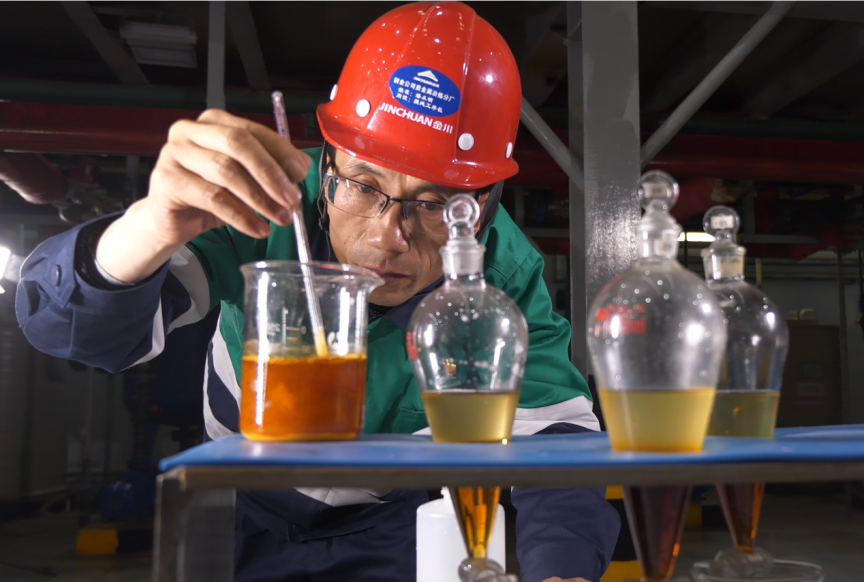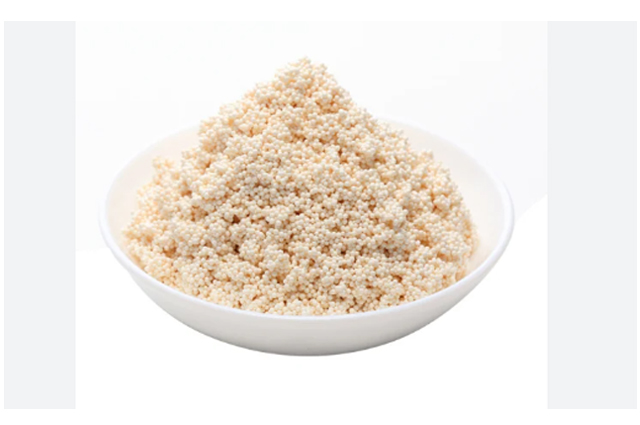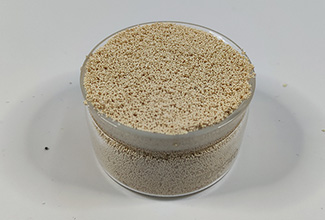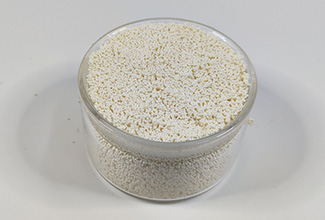Precious Metal Extraction and Separation
Ion exchange resins can selectively adsorb and separate a certain type of metal ion or a certain type of metal ion from mineral infusion or slurry. After elution with different eluents, a concentrated solution containing a certain metal ion is obtained, and then reduced to obtain a metal with a higher purity. Since ion exchange resins can fix cations or anions, they can be converted from one inorganic substance to another inorganic substance through ion exchange, or impurities can be removed from the inorganic compound body. Therefore, ion exchange resins can be used to prepare and purify inorganic substances. There are two different design principles for ion exchange resins to separate and purify mixtures. One is to pass the mixture through an ion exchange column, and the resin selectively adsorbs and retains the required ions, and the impurities pass through the column. It is suitable for systems with more impurities, such as hydrometallurgy; the other is to quantitatively retain impurities on the resin column, so that the required ions flow out of the column first for purification, which is suitable for systems with fewer impurities, such as the purification of compounds.
In nature, gold mainly coexists in the form of natural metal or gold/silver alloy with sulfides of metals such as iron, silver, arsenic, and copper in the ore. Gold can be leached from the ore with aqueous solutions of complexing agents such as cyanide, chlorine, thiourea, and thiosulfate. The complex ions enriched in gold can be adsorbed and separated from other elements by ion exchange resin or chelating resin from the gold ore leachate or pulp, and then eluted with an appropriate desorbent. The washed gold-rich clear liquid can be electrolyzed to obtain gold, and the purity is generally above 95%.
In the metallurgical industry, a large amount of silver is extracted from the pulp or liquid material after the gold is extracted by adsorption. The extraction method is basically the same as the above-mentioned gold extraction, using cyanide leaching/ion exchange resin adsorption method.

In nature, gold mainly coexists in the form of natural metal or gold/silver alloy with sulfides of metals such as iron, silver, arsenic, and copper in the ore. Gold can be leached from the ore with aqueous solutions of complexing agents such as cyanide, chlorine, thiourea, and thiosulfate. The complex ions enriched in gold can be adsorbed and separated from other elements by ion exchange resin or chelating resin from the gold ore leachate or pulp, and then eluted with an appropriate desorbent. The washed gold-rich clear liquid can be electrolyzed to obtain gold, and the purity is generally above 95%.
In the metallurgical industry, a large amount of silver is extracted from the pulp or liquid material after the gold is extracted by adsorption. The extraction method is basically the same as the above-mentioned gold extraction, using cyanide leaching/ion exchange resin adsorption method.

Last One :
Next Article :
Related Products
-
 Gold Extraction Resin Metal Removal and RecoveryAppearance: White to light yellow opaque beadsIonic form:CLVolum exchange rate (mmol/ml):0.30~0.70
Gold Extraction Resin Metal Removal and RecoveryAppearance: White to light yellow opaque beadsIonic form:CLVolum exchange rate (mmol/ml):0.30~0.70 -
 Chelating Resin for Precious Metals RecoveryAppearance: Milky to light yellow opacity spherical beadsIonic form:Na+Volume complete exchange capacity(mmol/ml):≥2.0
Chelating Resin for Precious Metals RecoveryAppearance: Milky to light yellow opacity spherical beadsIonic form:Na+Volume complete exchange capacity(mmol/ml):≥2.0 -
 GD200 Thiourea Chelating Resin for Precious Metal Extraction ResinAppearance: Milky to light yellow opacity spherical beadsIonic form:H+Volume complete exchange capacity(mmol/ml):≥1.2
GD200 Thiourea Chelating Resin for Precious Metal Extraction ResinAppearance: Milky to light yellow opacity spherical beadsIonic form:H+Volume complete exchange capacity(mmol/ml):≥1.2
Message

